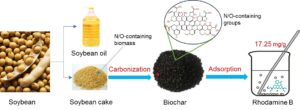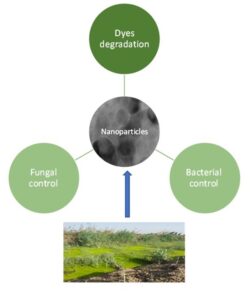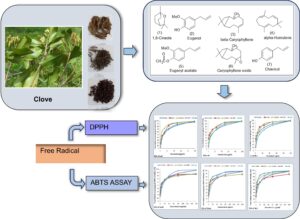Volume 18 Issue 4
Latest articles
- Researchpp 7443-7459Yu, S., Zheng, Q., Chen, T., Zhang, H., and Chen, X. (2023). “Consumer personality traits vs. their preferences for the characteristics of wood furniture products,” BioResources 18(4), 7443-7459.AbstractArticlePDF
Individual personality traits are powerful determinants of behavior, and they can profoundly influence consumer decisions as a comprehensive understanding of consumer personality traits. Their role in decision-making can improve the predictability of consumer-related behavior. In this study, data on consumers’ preferences and personality traits were collected through questionnaires using the Wood Furniture Product Characteristics Consumer Preference Scale and the Big Five Personality Inventory Simplified. Bivariate correlation analysis and stepwise multiple regression analysis were used to investigate the relationship between the Big Five personality traits (neuroticism, extraversion, openness, agreeableness, and conscientiousness) and wood furniture product characteristics consumer preferences. Correlation analysis indicated that neuroticism was correlated negatively with wood furniture product characteristic consumer preference scores. Extraversion, agreeableness, and conscientiousness were correlated positively with wood furniture product characteristic consumer preference scores. There was no correlation between openness and consumer preference. Regression analysis indicated that neuroticism, extraversion, agreeableness, and conscientiousness predicted wood furniture product trait consumer preferences. Overall, assessing personality traits can help provide insight into the psychological and behavioral characteristics of consumers when purchasing wood furniture products, allowing for a more comprehensive understanding of market demand and more effective marketing and product positioning strategies.
- Researchpp 7460-7473Zhang, X., Yang, C., Zhang, T., Guo, J., Gan, Y., Wu, H., Khan, M. R., Xiao, H., and Song, J. (2023). “Self-nitrogen-doped biochar derived from soybean cake for rhodamine B removal prepared via simple carbonization,” BioResources 18(4), 7460-7473.AbstractArticlePDF

Nitrogen-doped biochar performs much better in dye adsorption due to its rich functional groups. Soybean cake, a by-product of soybean oil production, comprises rich contents of cellulose, lignin, and protein. Therein, simple direct carbonization was utilized to prepare self-nitrogen-doped biochar (SCB). The results showed that the N content of SCB was 6.81 wt%, and its specific surface area was 18.8 m2/g. X-ray photoelectron spectroscopic results confirmed that the surface of SCB was rich in pyridine-N, pyrrole-N, graphite-N, and oxidized-N functional groups. The adsorption capacity of SCB for Rhodamine B was 17.2 mg/g, which is higher compared with other unactivated biochars. The results of thermodynamic parameters indicate that Rhodamine B adsorption on SCB is an endothermic, entropy-increasing, and spontaneous process.
- Researchpp 7474-7489Alsalamah, S. A., Alghonaim, M. I., Mohammad, A. M., and Abdel Ghany, T. M. (2023). “Algal biomass extract as mediator for copper oxide nanoparticle synthesis: Applications in control of fungal, bacterial growth, and photocatalytic degradations of dyes,” BioResources 18(4), 7474-7489.AbstractArticlePDF

Recently, algae have attracted the attention of investigators as a renewable source of compounds that can contribute to nanoparticle creation. The use algae biomass to facilitate preparation of copper oxide nanoparticles (CuONPs), as well as their application, were the aims of the present study. High performance liquid chromatography analysis of algal biomass indicated the presence of daidzein (2550 µg/mL), followed by ellagic acid (596 µg/mL). Algal biomass extract was successful as a bio-reducing agent for CuONPs fabrication at different temperatures up to 50 °C. Transmission electron microscopy characterized the created CuONPs with average size 5 to 17 nm. The colony radius of M. anisopliae, T. harzianum, C. lunata, F. oxysporium, A. flavus, and A. terreus was 1.84 ± 0.08, 1.97 ± 0.03, 1.00 ± 0.08, 2.04 ± 0.03, 2.32 ± 0.06, and 2.42 ± 0.05 cm, respectively at 200 mg of CuONPs. CuONPs exhibited inhibition zones of 26, 23, 25, and 22 mm when tested against B. subtilis, E.coli, K. pneumoniae, and S. aureus, respectively. Methyl orange and methyl green dyes were degraded by CuONPs with percentages ranging from 9.5 to 63.7% and from 22.3 to 75.7% at 15 to 90 min, respectively. Therefore, the created CuONPs can be regarded as excellent candidates for controlling fungal/bacterial development and dyes degradation.
- Researchpp 7490-7509Cornaggia, A., Gajewski, T., Knitter-Piątkowska, A., and Garbowski, T. (2023). “Influence of humidity and temperature on mechanical properties of corrugated board - Numerical investigation,” BioResources 18(4), 7490-7509.AbstractArticlePDF
Paper is a material whose mechanical properties are highly dependent on humidity and temperature, naturally building the relationship between the stiffness and strength of corrugated board and changing weather conditions. In this paper, attention is focused on the dependence of the physical properties of the cardboard on changes in humidity and temperature, which undergo dynamic fluctuations both during the production of corrugated board and during its storage. Two techniques were used to test this effect, namely numerical homogenization and global sensitivity analysis. Both methods were implemented to determine the theoretical relationships between the change in humidity and/or temperature in each layer of corrugated board and its global bending, compression, and shear stiffness. The procedure was used to analyze different types of 5-ply and 3-ply cardboard. The obtained results allowed the authors to build a complete map of the relationship between the change in humidity of selected layers and the strength characteristics of the full assembly.
- Researchpp 7510-7523Sosiati, H., Kosasih, M., Pamasti, A., Adi, R. K., Hamdan, S., and Yusuf, Y. (2023). “Properties of abaca/epoxy composites modified by activated carbon particles for orthosis application,” BioResources 18(4), 7510-7523.AbstractArticlePDF
Abaca fiber (AF), epoxy (EP), and activated carbon particle (ACPs) incorporated composites have been previously studied to improve their mechanical properties. A study on integrating AF and ACPs to reinforce EP has not been done for comparison. The current study investigates the mechanical (tensile and flexural) and physical (water absorption) properties of AF/EP composites with 20 vol% AF modified by ACPs at 1% to 10% levels, and ACPs/EP composite with 20 vol% ACPs. Optical and scanning electron microscopy examined ACPs and the composite’s fracture surface morphologies. X-ray diffraction was used to identify the ACPs’ phase. The results showed that adding 5 vol% ACPs to AF/EP led to an optimum tensile strength of 42.50 MPa, which was slightly lower than AF/EP (43.00 MPa), and an optimum flexural strength of 62.10 MPa, which was slightly higher than AF/EP (60.50 MPa). Besides, adding 20% ACPs to EP resulted in a tensile strength of 31.93 MPa, higher than the previous result of ACPs/EP (26.34 MPa), also by adding 20% ACPs. Introducing ACPs to AF/EP could reduce water absorption in the composite by 6.52%. The measured flexural modulus of AF/EP added with 5 vol% ACPs was selected as the best material used in the simulation of ankle-foot orthosis (AFO) by Autodesk Inventor integrated with ANSYS Workbench 2019 R1. Applying a load of 27 N resulted in a von Misses stress of 54.018 MPa and a deformation of 44.675 mm.
- Researchpp 7524-7538Liu, L., Fang, Y., Gao, R., and Li, J. (2023). “Optimization of Ni/ZnZr catalyst for enhanced syngas yield in catalytic pyrolysis of rice straw,” BioResources 18(4), 7524-7538.AbstractArticlePDF
To enhance the catalytic performance of nickel-based catalysts and improve their efficiency in biomass pyrolysis, a nickel-based catalyst supported on a ZnZr composite carrier was synthesized using the sol-gel method. The morphological changes of the catalyst before and after the reaction were observed using X-ray diffraction, scanning electron microscopy, nitrogen gas adsorption, temperature-programmed reduction, and other methods to analyze its catalytic performance. A series of experiments were conducted to explore the optimal conditions for the catalyst’s gas production, including carrier material ratios, loading amounts, residence time, and reaction temperature. The bimetallic carrier of Zn and Zr provided a higher specific surface area, allowing the metallic nickel to enter its mesopores. The synergistic effect of the bimetallic system facilitated the catalytic activity of nickel, significantly enhancing gas production. The maximum CO and H2 production were achieved at Zn/Zr = 6/4. The catalyst achieved an optimal gas yield of 507 mL/g at a residence time of 20 min and a reaction temperature of 800 °C, demonstrating strong stability.
- Researchpp 7539-7550Su, T., Xie, J., Chen, W., Yu, B., Gu, Y., and Wu, G. (2023). “Wood membrane filter for water purification with radial and axial flows,” BioResources 18(4), 7539-7550.AbstractArticlePDF
Water availability is an important issue all over the world, and membrane filtration technology is one of the most effective measures for remediation. As a sustainable and renewable biomass material, natural wood has a hierarchical and three-dimensional interconnected microstructure, which provides an alternative for water filter design. Longitudinal filtration could take advantage of the micropores, while the treatment speed is severely limited. This study examined a wood filter in which muddy wastewater can be transported into the microchannels and out of the vertically stacked micropores. The filter takes full advantage of the pores present in the wood without sacrificing the speed of hydraulic flow within the main transport channels, exhibiting excellent performance for mud removal. In this manner, water flux, decolorization, and turbidity are highly dependent on the groove number, groove depth, and thickness of the filter. Due to the reorientation of the water transport pathways, the clogging of micropores could be easily alleviated, thus promoting the filter lifecycle. The design of the cross-flow wood filter can provide an available platform for various wastewater treatment cases with different impurities, displaying an application prospect in the wastewater treatment field.
- Researchpp 7551-7565Sohilait, H. J., Kainama, H., and Kaihena, M., (2023). “Chemical composition and antioxidant activities of the essential oils of Eugenia caryophyllata from Northern Buru Island, Moluccas,” BioResources 18(4), 7551-7565.AbstractArticlePDF

The essential oils of clove species Eugenia caryophyllata (COs) from northern Buru Island were obtained by steam distillation. The chemical components were characterized by gas chromatography (GC-FID) and GC-mass spectrophotometry (MS). In total, five components were identified in COs of leaf, four components were identified in COs of bud, and two components were identified in COs of stem. The main constituents are eugenol (77.1% to 78.8%) and β-caryophyllene (17.0% to 19.6%) in COs of leaf. The main components are eugenol (76.1% to 87.7%) and eugenyl acetate (6.0% to18.9%) in COs of bud and the only main component was eugenol (94.2% to 97.6%) in COs of stem from Waihani (COsWh), Ilath (COsI) and Waimoli (COsWm). The antioxidant activity COs of leaf, bud, and stem was identified using DPPH and ABTS assay. Results showed that COsI of bud had higher ABTS free radical scavenging (IC50 value: 0.09 ± 0.61 μg/mL) than the eight samples in the study. When this activity was compared with synthesis antioxidant of BHT (IC50 value: 0.83 ± 0.54 μg/mL) and AA (IC50 value: 0.81 ± 1.64 μg/mL), the COs in three locations show potential of being used as an antioxidant.
- Researchpp 7566-7586Xiao, F., Li, D., Zhang, L., Li, Y, Du, Y., Xue, Y., Zhang, Y., Zhang, K., Gong, P., Song, Y., and Wu, K. (2023). “Influence of seaweed extracts on the degradation and effectiveness of 3,4-dimethylpyrazole phosphate,” BioResources 18(4), 7566-7586.AbstractArticlePDF
3,4-Dimethylpyrazole phosphate (DMPP) is acknowledged as one of the most efficient nitrification inhibitors (NIs); however, researchers have suggested that its effectiveness needs to be further improved. The authors combined the biostimulant seaweed extract (SE) with DMPP and conducted an indoor incubation experiment to initially investigate the impact of the influence of SE on the degradation and effectiveness of DMPP. Meanwhile, a method for the extraction and determination of DMPP was developed. DMPP performed better, with a longer effective time in loess than black soil, and SE showed a delayed effect on DMPP degradation of DMPP at the beginning of the incubation and then accelerated the degradation process. This was attributed to the adsorption effect of SE on DMPP, consequently reducing its effectiveness. The SE delayed the hydrolysis of urea in various soils; however, no significant impact on urease activity was observed (P < 0.05) (P < 0.05). Furthermore, it also increased potential nitrification rate (PNR) from 10 to 21 days and promoting the rapid transformation of NH4+-N in black soil. The SE reduced PNR within 21 days and inhibited nitrification in loess. In addition, the SE appeared to mitigate the adverse effects of excessive nitrogen on microorganisms The combination of DMPP and SE was not conducive to the inhibition of soil nitrification, and this formulation in field applications requires further investigation.
- Researchpp 7587-7600Maciel, A. P. V., Salvador, F. M., Silvares, P. H. S., Oliveira, M. P., and Batista, D. C. (2023). “Effect of density, moisture content, and feed speed on the surface quality of planed pinewood boards,” BioResources 18(4), 7587-7600.AbstractArticlePDF
The main goal of this study was to verify the best combination of density, moisture content, and feed speed on the surface quality of Pinus elliottii boards aimed at deck manufacturing. The secondary goal was to compare three methods of surface quality assessment. Tangential boards were sampled and sorted by density (level 1: 414 kg·m–³ to 525 kg·m–³; level 2: 526 kg·m–³ to 668 kg·m–³) and moisture content (level 1: 13.5% to 17.5%; level 2: 17.6% to 20.0%). A four-side planer molder was used, at three levels of feed speed (15, 20, and 25 m·min-1). Surface quality was assessed immediately after machining by visual-tactile analysis, stylus surface profilometer reading (parameters Ra, Rz, and Rt), and feed per tooth (fz) measurement. The best surface quality results were obtained with denser (526 kg·m–³ to 668 kg·m–³) and wetter boards (17.6% to 20.0% moisture content) at feed speed 20 m•min-1. This recommendation represents an optimal balance between the quality standard of the deck boards and high productivity. Because of the low cost and because it has some correspondence with the stylus surface profilometer readings, visual-tactile analysis is recommended to assess the surface quality.
